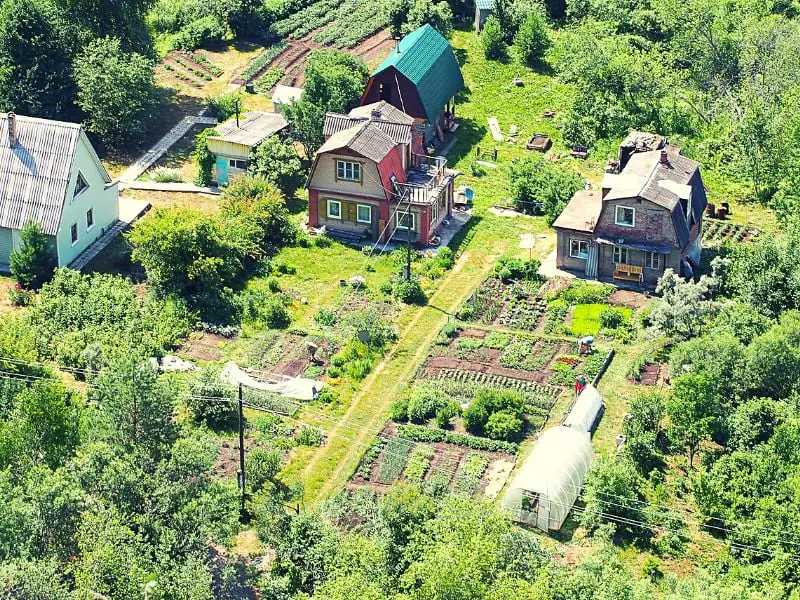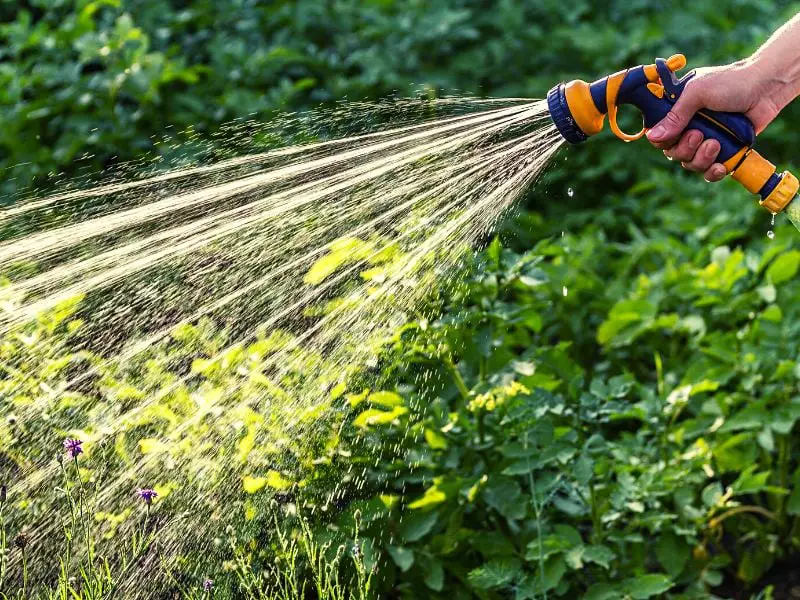The permaculture garden design process is an art – one that begins with the conception of your heart’s desires.
Keep in mind that you must consider what kind of materials might be available to build a permaculture garden in your area. In this article, we will look at things you need to know about permaculture garden design and the steps to take to get started.
What Is a Permaculture Garden?
Permaculture is a set of ecological design principles based on the idea that we should mimic natural systems and use them as a model to better our society. These principles allow for sustainable, human-scale development within nature’s ecosystems. Furthermore, permaculture is about more than just agriculture. It also delves into humans’ interactions with the environment.

Indigenous communities worldwide have practiced this type of agriculture system for centuries. It often uses existing landscape features like rivers, wetlands, and forests to grow food or generate soil fertility or timber production without additional external inputs.
Here is how Permaculture can help you lead a sustainable lifestyle and how it can benefit the environment.
The Ethics of Permaculture Design
Care for the Earth
The earth is our home, and we must take care of it. Some areas are better suited for permaculture than others because they already have the pre-existing elements (i.e., water, sunlight, wildlife, and organic matter) that you need to make permaculture happen.
Care for the People
Permaculture is about caring for people and the earth. It’s about looking at humans as a part of the ecosystem rather than above or apart from it.
Redistribute Surplus
One of the essential ethics of permaculture is the principle of fairness. At its core, permaculture is about people working together and sharing information and knowledge freely and fairly. Practicing permaculture allows people to work together and share resources.
Designing a Permaculture Garden
The hardest part of permaculture gardening is coming up with a plan. It means figuring out where to put your garden plot, what plants, foods, and herbs you want to grow, and whether or not your area is suitable for those things.
Here’s how to start the process of planning:
1. Familiarize Yourself With the Land
After identifying native plants in your region, the first step is to choose where to place them. Your environment is your bedrock, so develop your permaculture garden in a sunny location with easy access to a water supply.
You should also ensure that you have recognized regions with particular features, such as low areas, slopes, or other natural land contours.

2. Locate Your Spacing
Garden spacing depends on the amount of space you have and what you want to grow. The basic rule of thumb is to plant a single planting bed for every 300 square feet of garden space.
This will allow for more flexibility in growing your food and herbs and minimize the risk of pests and diseases. If you have a larger garden space, consider using an abundance of beds instead.
3. Choose the Type of Garden You Want to Grow
There’s no wrong answer in choosing the tree: raised beds, in-ground gardens, container gardens. It all comes down to personal preference.
Raised beds: Raised beds are an excellent alternative if you have poor soil since you can apply organic soil amendments (compost, cover crops, etc.) to increase its quality. They are especially useful if you have physical restrictions such as uneven terrain or rough surfaces. Furthermore, because the approach includes using various building materials, such as stones or old bricks, branches, and logs, you may design raised beds to your aesthetic preferences.
Inground gardens: In-ground gardens, on the other hand, employ existing soil and, thus, may not require soil amendments to yield a plentiful crop, making them even more cost-effective. Additionally, in-ground gardens are simple to relocate.
Container gardens: If you wish to cultivate a garden on your apartment balcony or have a very tiny yard, a container garden might serve as a little permaculture experiment. While this approach is unconventional, Randaci claims it has several advantages, including minor illness and pest concerns (insects that generally travel from one plant to another might have trouble finding your plants). Additionally, containers can be visually beautiful, simple to change, have minimal upkeep, and are more accessible to youngsters and the elderly.
Pro Tips for a Small Garden
1. Start Small
It is always a good idea to start small and work your way up. You can continually expand your permaculture garden if you see fit. This will allow you to experiment, see which plants perform best for you, and help you identify any problems quickly before they get out of hand.

2. Make Sure to Keep a Close Distance to a Water Supply
While it might not seem necessary, this practice is vital in maintaining your garden. A consistent water source allows you to prioritize tasks more efficiently, such as watering, weeding, and pest control. Additionally, if you have a shady spot at the edge of your property, arrange to put a hand pump there to get water when needed.
3. Right Plant, Right Place
Plant the right kind of plants where the conditions are the best. For example, if you have a place with poor soil or shallow depths, use sturdier plants that can tolerate those conditions. Also, plant water-wise plants if you have a wet area or one prone to flooding. On the other hand, if you have a dry area or one prone to drought (such as on north-facing slopes), then fill it with herbs and crops that require little water, like strawberries, tomatoes, and peppers.
4. Trust the Process
Permaculture is more than just a gardening style—it’s a philosophy on life, so embrace the movement. Be open-minded to new ideas, research and experiment with different methods, and try to stay curious about the world around you; that way, your gardens will reflect the beauty of your environment. With permaculture, you’ll grow a garden that truly reflects your values, improves the health of your neighbors, and nurtures the environment.

Author’s Note
Permaculture is not just about creating a beautiful and sustainable garden and setting it up to take care of itself. Instead, permaculture gardeners are people who care deeply about their surroundings and the planet and who strive to be conscious of their actions and how they affect others. The lifestyle encourages conservation, appreciation, awareness of the environment and community, and cooperation with others.


8 thoughts on “A First Guide to Designing a Permaculture Garden”